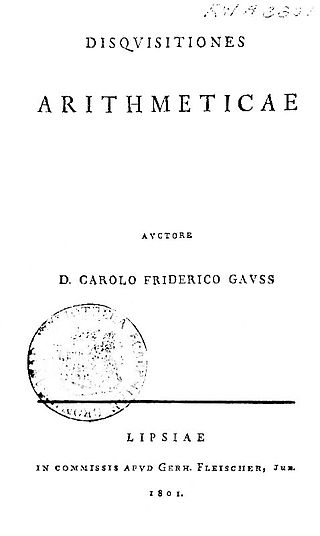In number theory, Tijdeman's theorem states that there are at most a finite number of consecutive powers. Stated another way, the set of solutions in integers x, y, n, m of the exponential diophantine equation
In number theory, Tijdeman's theorem states that there are at most a finite number of consecutive powers. Stated another way, the set of solutions in integers x, y, n, m of the exponential diophantine equation
The theorem was proven by Dutch number theorist Robert Tijdeman in 1976, [3] making use of Baker's method in transcendental number theory to give an effective upper bound for x,y,m,n. Michel Langevin computed a value of exp exp exp exp 730 for the bound. [1] [4] [5]
Tijdeman's theorem provided a strong impetus towards the eventual proof of Catalan's conjecture by Preda Mihăilescu. [6] Mihăilescu's theorem states that there is only one member to the set of consecutive power pairs, namely 9=8+1. [7]
That the powers are consecutive is essential to Tijdeman's proof; if we replace the difference of 1 by any other difference k and ask for the number of solutions of
with n and m greater than one we have an unsolved problem, [8] called the generalized Tijdeman problem. It is conjectured that this set also will be finite. This would follow from a yet stronger conjecture of Subbayya Sivasankaranarayana Pillai (1931), see Catalan's conjecture, stating that the equation only has a finite number of solutions. The truth of Pillai's conjecture, in turn, would follow from the truth of the abc conjecture. [9]

In mathematics, a Diophantine equation is an equation, typically a polynomial equation in two or more unknowns with integer coefficients, for which only integer solutions are of interest. A linear Diophantine equation equates to a constant the sum of two or more monomials, each of degree one. An exponential Diophantine equation is one in which unknowns can appear in exponents.
Catalan's conjecture (or Mihăilescu's theorem) is a theorem in number theory that was conjectured by the mathematician Eugène Charles Catalan in 1844 and proven in 2002 by Preda Mihăilescu at Paderborn University. The integers 23 and 32 are two perfect powers (that is, powers of exponent higher than one) of natural numbers whose values (8 and 9, respectively) are consecutive. The theorem states that this is the only case of two consecutive perfect powers. That is to say, that
Hilbert's tenth problem is the tenth on the list of mathematical problems that the German mathematician David Hilbert posed in 1900. It is the challenge to provide a general algorithm that, for any given Diophantine equation, can decide whether the equation has a solution with all unknowns taking integer values.

Faltings's theorem is a result in arithmetic geometry, according to which a curve of genus greater than 1 over the field of rational numbers has only finitely many rational points. This was conjectured in 1922 by Louis Mordell, and known as the Mordell conjecture until its 1983 proof by Gerd Faltings. The conjecture was later generalized by replacing by any number field.

The abc conjecture is a conjecture in number theory that arose out of a discussion of Joseph Oesterlé and David Masser in 1985. It is stated in terms of three positive integers and that are relatively prime and satisfy . The conjecture essentially states that the product of the distinct prime factors of is usually not much smaller than . A number of famous conjectures and theorems in number theory would follow immediately from the abc conjecture or its versions. Mathematician Dorian Goldfeld described the abc conjecture as "The most important unsolved problem in Diophantine analysis".

Algebraic number theory is a branch of number theory that uses the techniques of abstract algebra to study the integers, rational numbers, and their generalizations. Number-theoretic questions are expressed in terms of properties of algebraic objects such as algebraic number fields and their rings of integers, finite fields, and function fields. These properties, such as whether a ring admits unique factorization, the behavior of ideals, and the Galois groups of fields, can resolve questions of primary importance in number theory, like the existence of solutions to Diophantine equations.

In number theory, the study of Diophantine approximation deals with the approximation of real numbers by rational numbers. It is named after Diophantus of Alexandria.
In mathematics, Roth's theorem or Thue–Siegel–Roth theorem is a fundamental result in diophantine approximation to algebraic numbers. It is of a qualitative type, stating that algebraic numbers cannot have many rational number approximations that are 'very good'. Over half a century, the meaning of very good here was refined by a number of mathematicians, starting with Joseph Liouville in 1844 and continuing with work of Axel Thue, Carl Ludwig Siegel, Freeman Dyson, and Klaus Roth.
The Beal conjecture is the following conjecture in number theory:
In mathematics, in the field of number theory, the Ramanujan–Nagell equation is an equation between a square number and a number that is seven less than a power of two. It is an example of an exponential Diophantine equation, an equation to be solved in integers where one of the variables appears as an exponent.
This is a glossary of arithmetic and diophantine geometry in mathematics, areas growing out of the traditional study of Diophantine equations to encompass large parts of number theory and algebraic geometry. Much of the theory is in the form of proposed conjectures, which can be related at various levels of generality.
A height function is a function that quantifies the complexity of mathematical objects. In Diophantine geometry, height functions quantify the size of solutions to Diophantine equations and are typically functions from a set of points on algebraic varieties to the real numbers.
In mathematics, Hall's conjecture is an open question on the differences between perfect squares and perfect cubes. It asserts that a perfect square y2 and a perfect cube x3 that are not equal must lie a substantial distance apart. This question arose from consideration of the Mordell equation in the theory of integer points on elliptic curves.
In mathematics, the subspace theorem says that points of small height in projective space lie in a finite number of hyperplanes. It is a result obtained by Wolfgang M. Schmidt.
In mathematics, the Goormaghtigh conjecture is a conjecture in number theory named for the Belgian mathematician René Goormaghtigh. The conjecture is that the only non-trivial integer solutions of the exponential Diophantine equation
In number theory, Szpiro's conjecture relates to the conductor and the discriminant of an elliptic curve. In a slightly modified form, it is equivalent to the well-known abc conjecture. It is named for Lucien Szpiro, who formulated it in the 1980s. Szpiro's conjecture and its equivalent forms have been described as "the most important unsolved problem in Diophantine analysis" by Dorian Goldfeld, in part to its large number of consequences in number theory including Roth's theorem, the Mordell conjecture, the Fermat–Catalan conjecture, and Brocard's problem.

In number theory, Fermat's Last Theorem states that no three positive integers a, b, and c satisfy the equation an + bn = cn for any integer value of n greater than 2. The cases n = 1 and n = 2 have been known since antiquity to have infinitely many solutions.
In algebraic number theory, Leopoldt's conjecture, introduced by H.-W. Leopoldt, states that the p-adic regulator of a number field does not vanish. The p-adic regulator is an analogue of the usual regulator defined using p-adic logarithms instead of the usual logarithms, introduced by H.-W. Leopoldt.
In number theory, the Fermat–Catalan conjecture is a generalization of Fermat's Last Theorem and of Catalan's conjecture. The conjecture states that the equation
The Lander, Parkin, and Selfridge conjecture concerns the integer solutions of equations which contain sums of like powers. The equations are generalisations of those considered in Fermat's Last Theorem. The conjecture is that if the sum of some k-th powers equals the sum of some other k-th powers, then the total number of terms in both sums combined must be at least k.